COPD Management: 1940s-1960
A brief overview of the history of COPD Management from the 1940s to 1960.
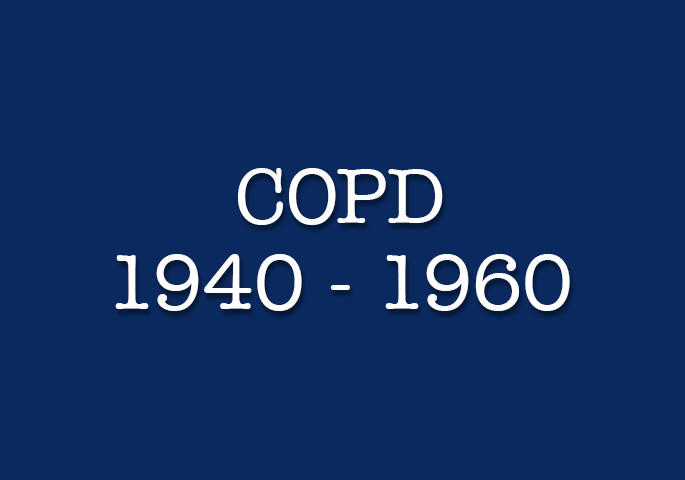
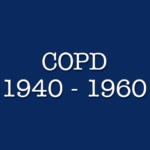
COPD 1940-1960
This gallery provides a brief overview of the management of pulmonary emphysema in the early decades of our profession.
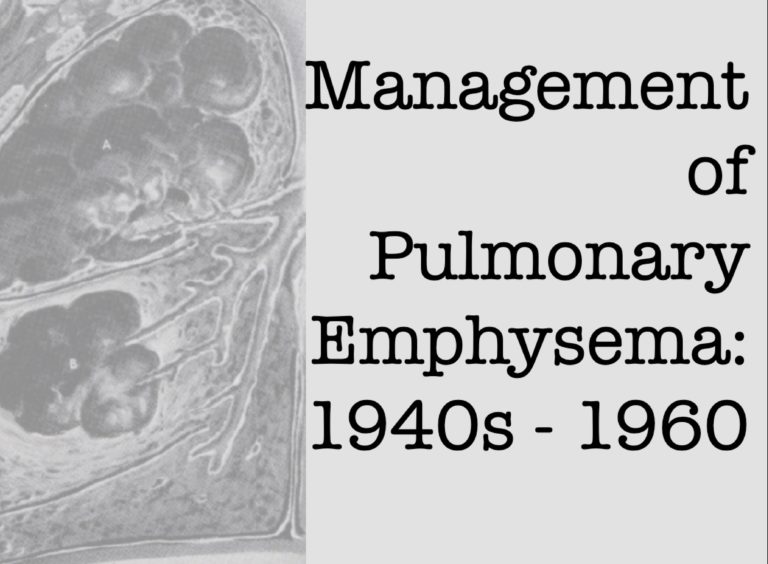
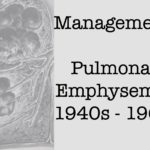
Emphysema Management
As the inhalation therapy profession was developing, the acronym COPD did not yet exist. In the late 1950s and early 1960s, pulmonary emphysema was identified as the most common chronic disease of the lung.
Image from February 1960 issue of INHALATION THERAPY
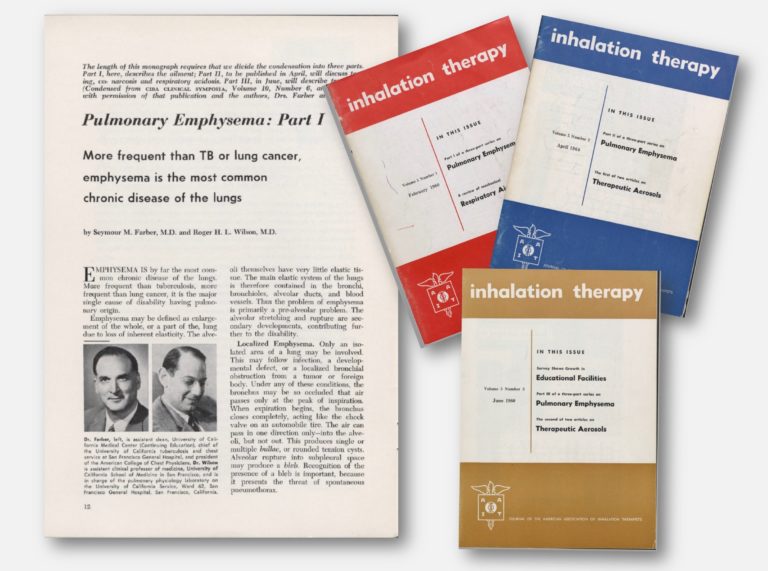
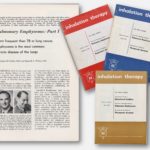
Emphysema series
In 1960, INHALATION THERAPY featured a three part series on emphysema in the February, April, and June isses. The series, authored by Seymour M. Farber, MD and Roger H Wilson, MD, featured the pathophysiology, diagnosis, and management of the disease. The series included a number of illustrations by Frank Netter, MD.
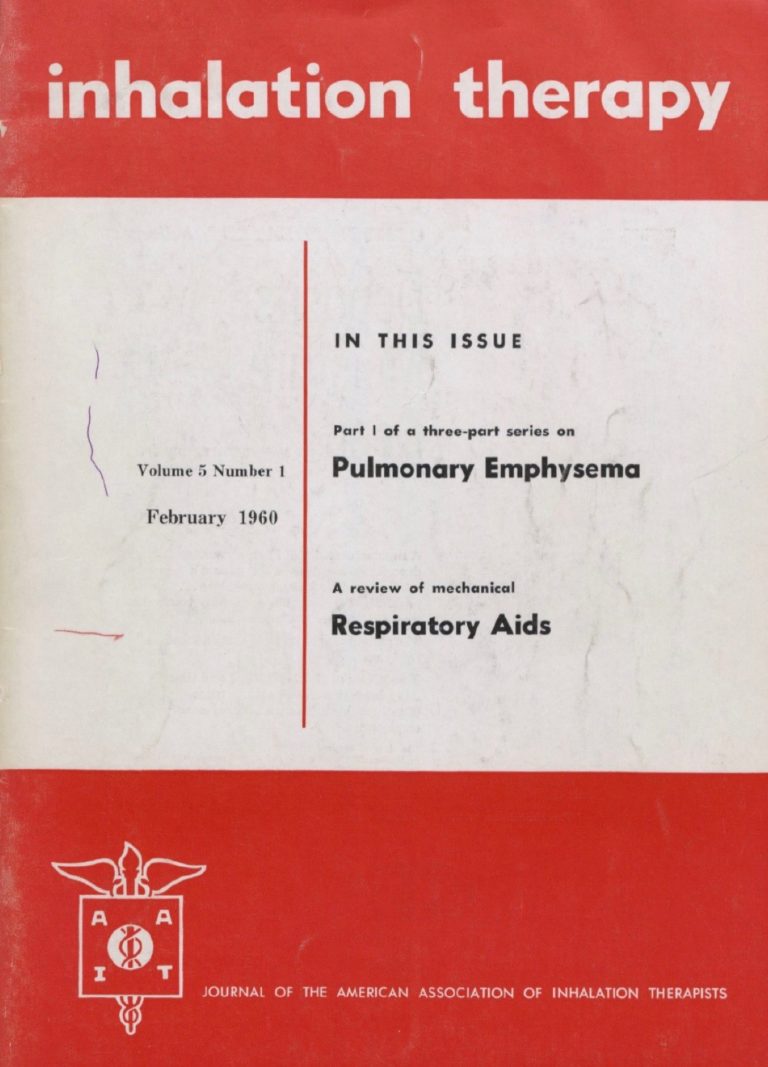
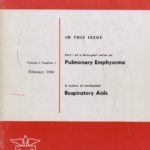
February 1960
The first of a three part emphysema series appeared in the February 1960 issue of INHALATION THERAPY and focused on the pathophysiology of emphysema.
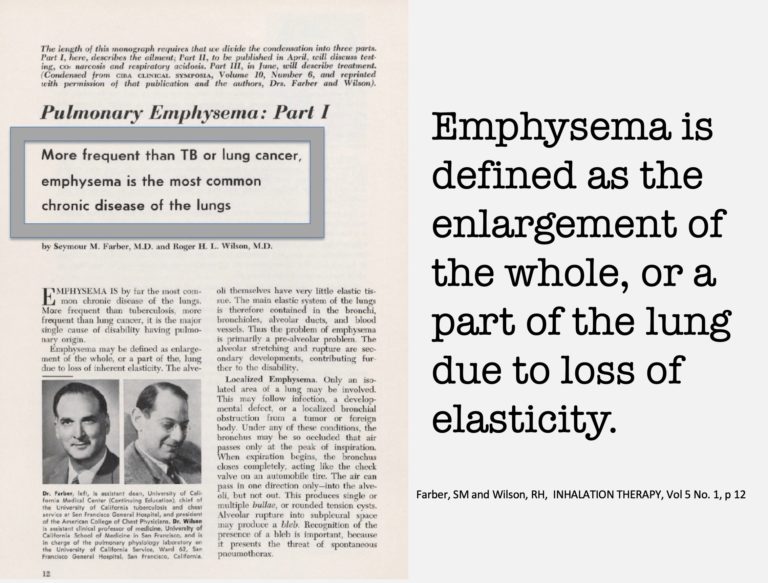
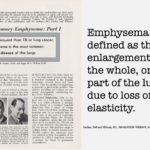
Definition
In the 1960 article, emphysema was identified as the most common chronic disease of the lungs. It is defined as the enlargement of a portion of a lung or of an entire lung due to loss of elasticity.
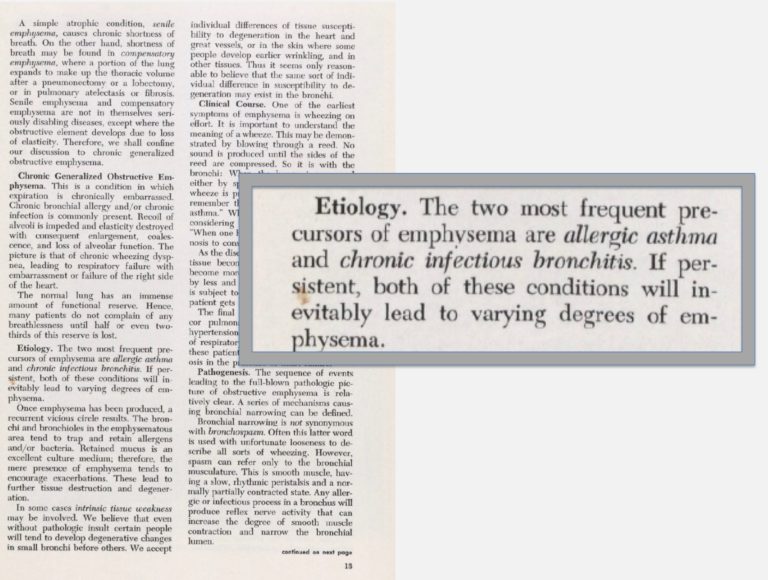
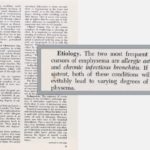
Primary Precursors
The February 1960 Emphysema PartII article indicated that the two primary precursors of emphysema were allergic asthma and chronic infectious bronchitis.
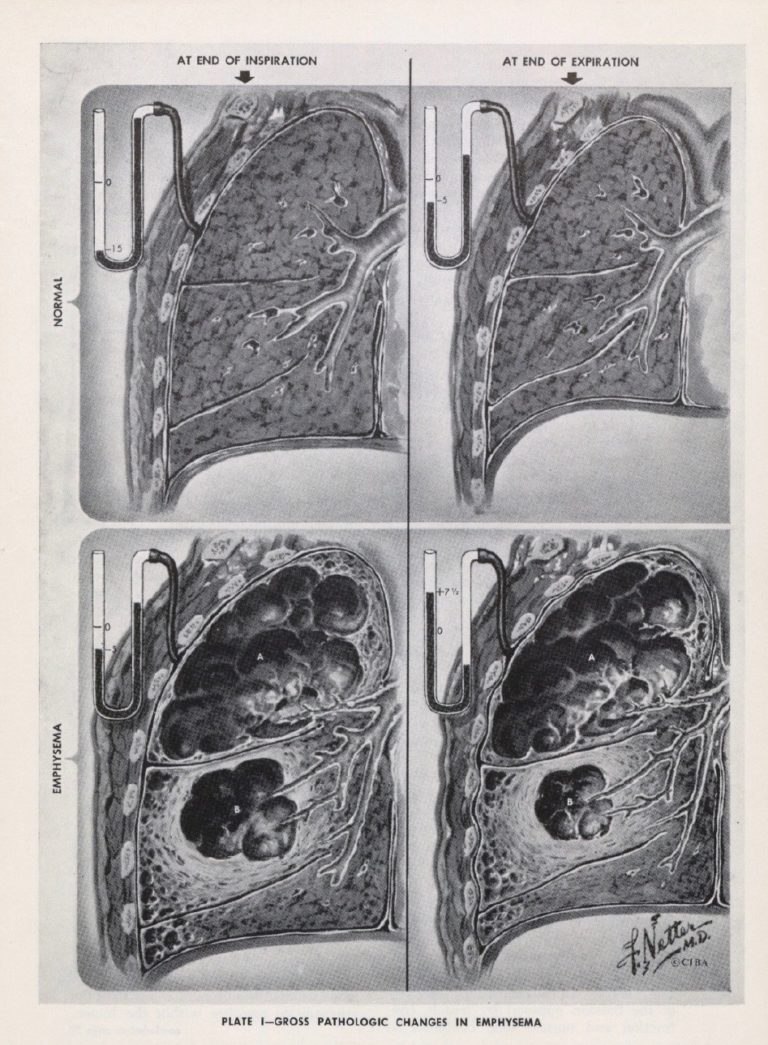
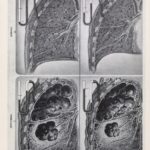
Gross Pathology
These illustrations by Frank Netter MD depict the gross pathologic changes that occur in emphysema. They appeared in the February 1960 issue of INHALATION THERAPY.
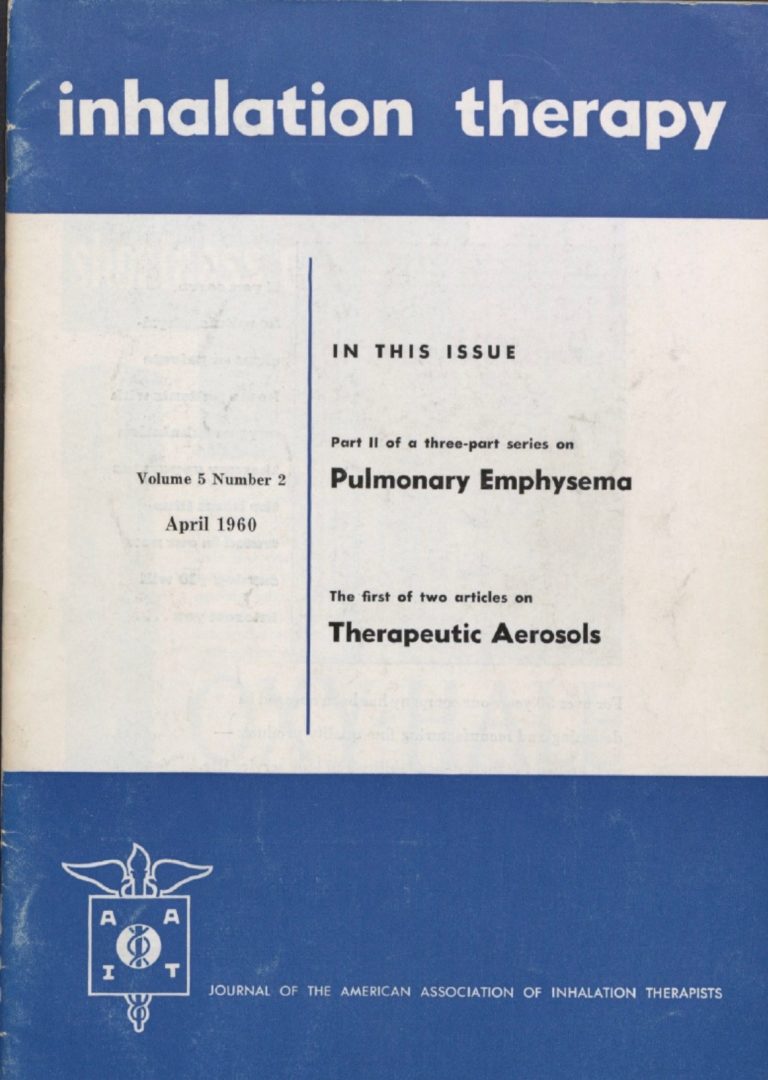
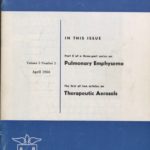
April 1960
Emphysema Part II which appeared in the April 1960 issue of INHALATION THERAPY focused on changes in spirometry and changes in gas exchange in emphysema.
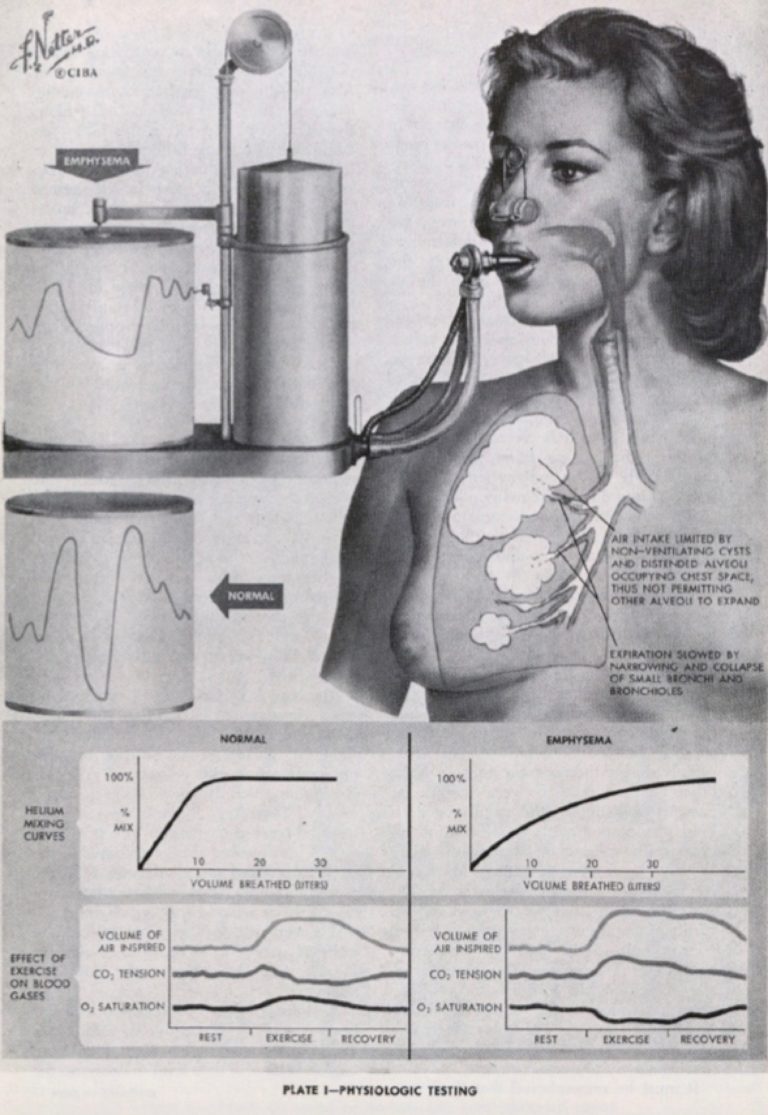
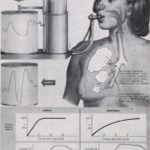
PFT testing
This illustration by Frank Netter, MD appeared in the April 1960 issue of INHALATION THERAPY.
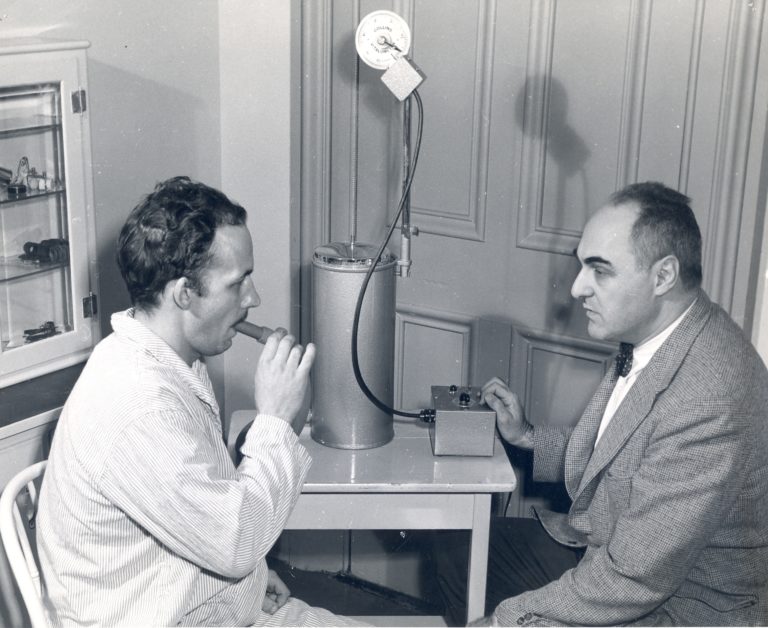
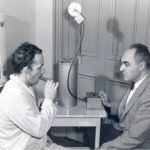
PFT
This image shows Albert Aranson, MD performing a pulmonary function test using the Collins Respirometer.
Image from Robert Aranson, MD
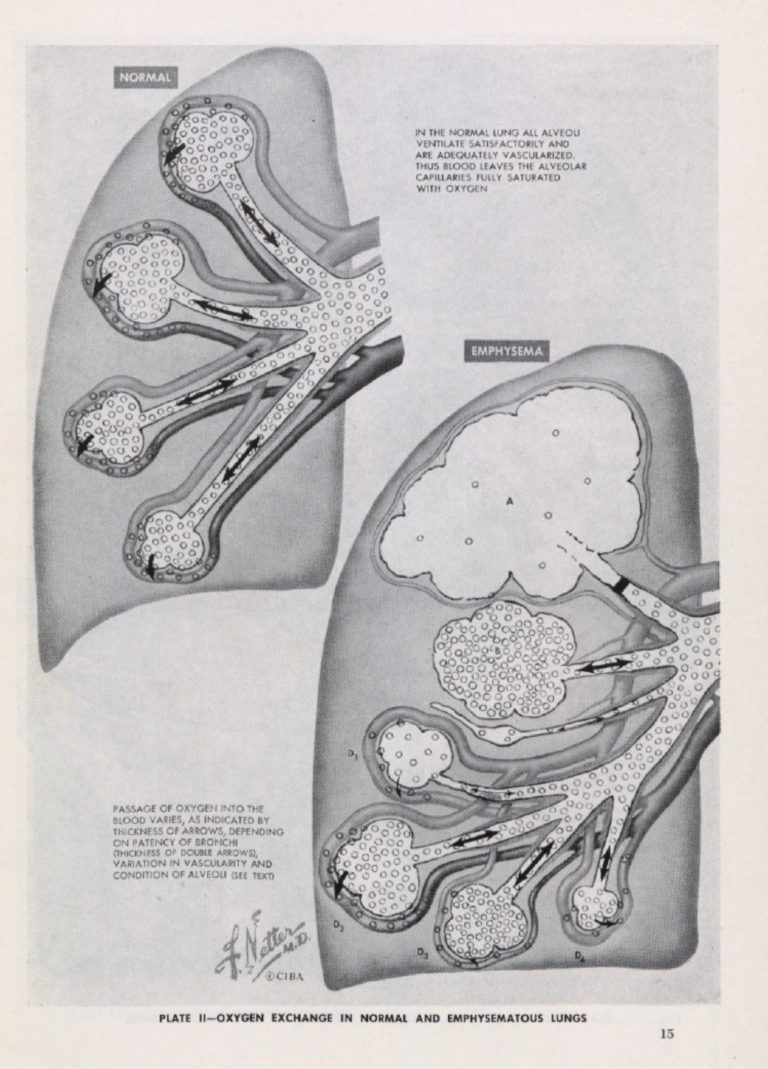
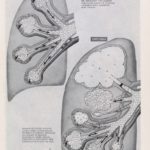
O2 Exchange
Oxygen exchange in a normal lung and in emphysema is depicted in this illustration by Frank Netter, MD that appeared in the April 1960 issue of INHALATION THERAPY.
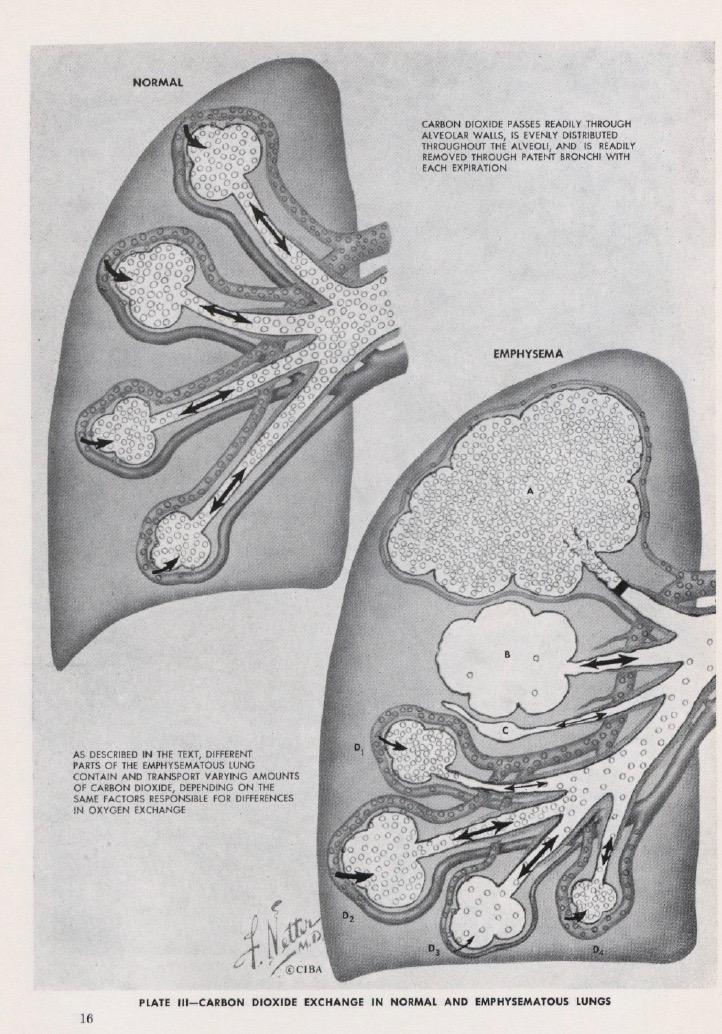
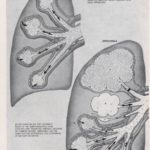
CO2 Exchange
Carbon dioxide exchange in a normal lung and in emphysema is depicted in this illustration by Frank Netter, MD that appeared in the April 1960 issue of INHALATION THERAPY.
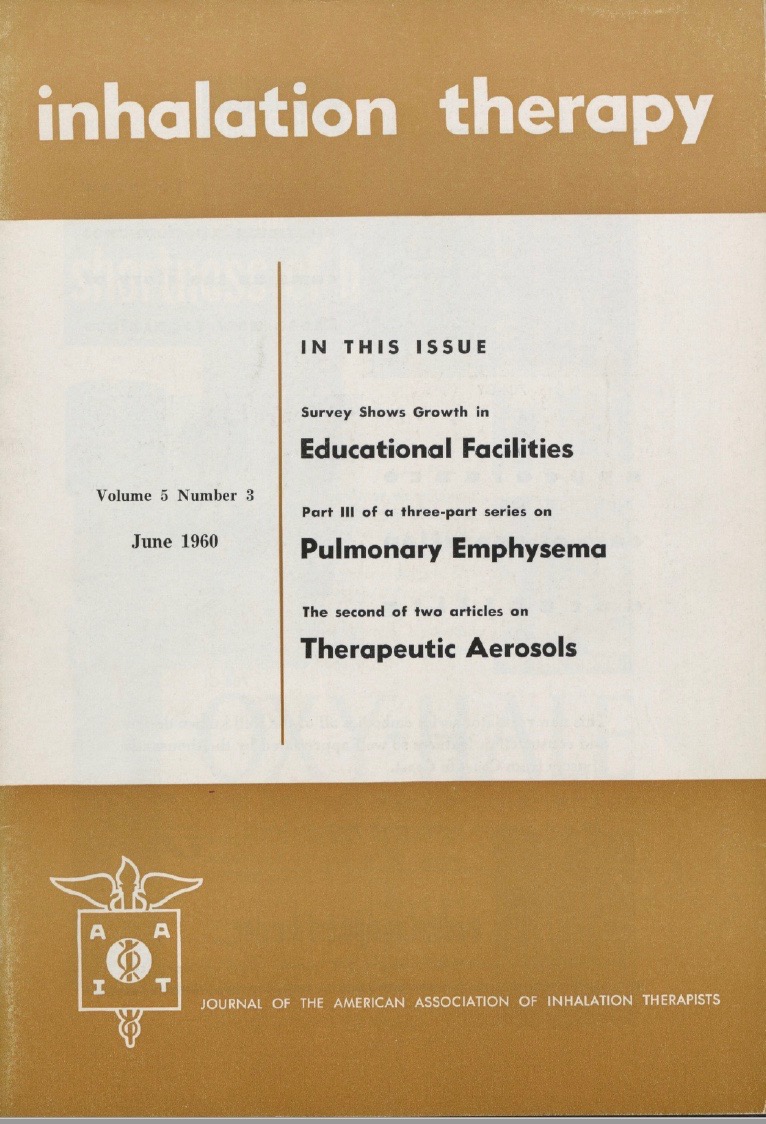
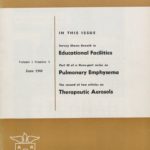
June 1960
Emphysema-Part III which appeared in the June 1960 issue of INHALATION THERAPY, focused on the treatment of emphysema.
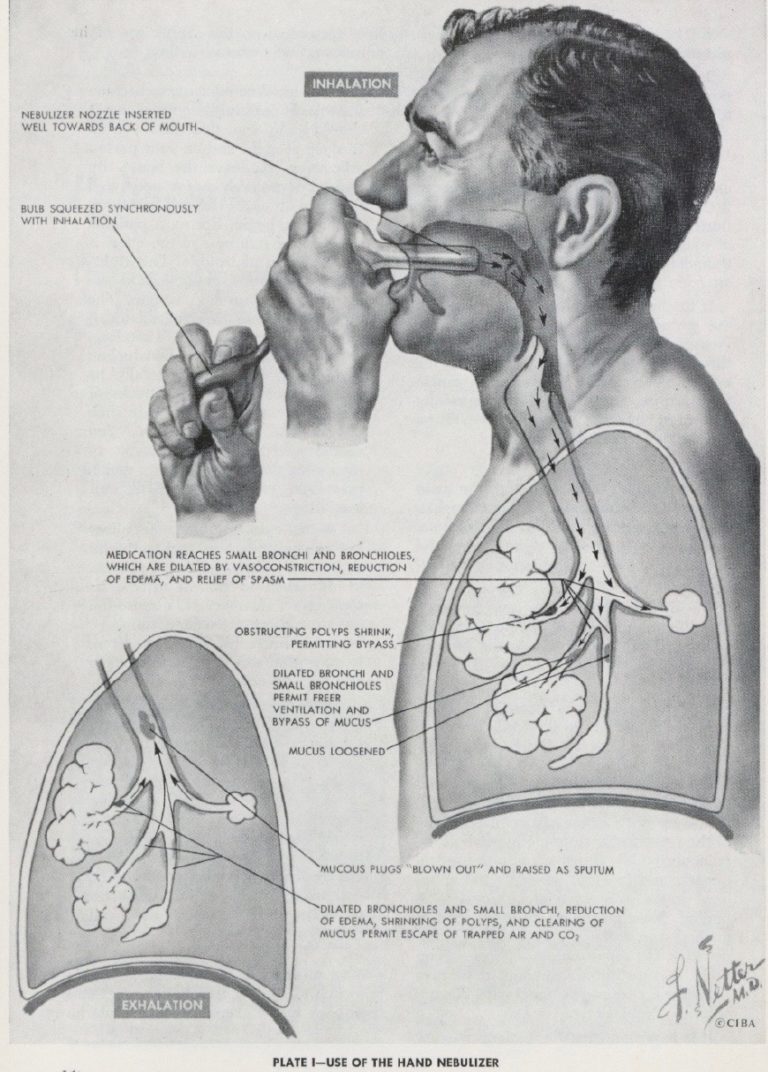
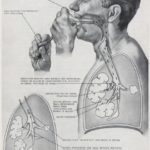
Hand Bulb Nebulizer
This illustration by Frank Netter, MD appeared in the June 1960 issue of the INHALATION THERAPY journal.
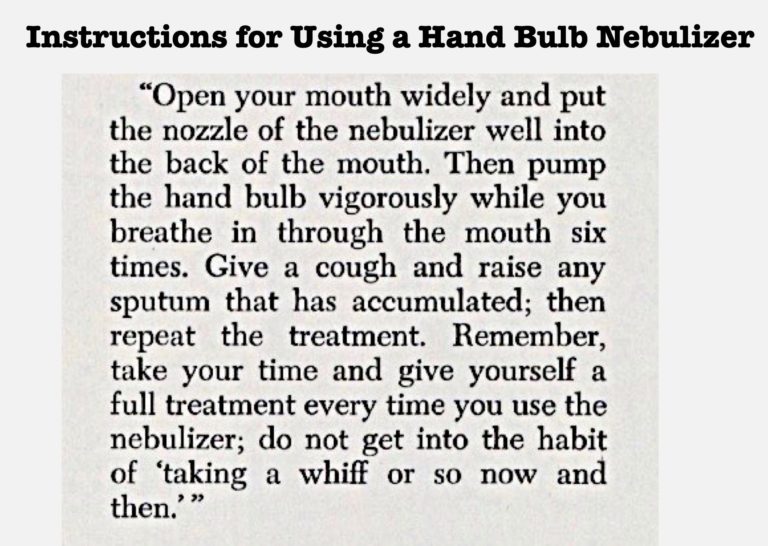
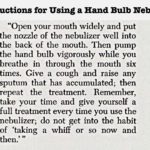
Hand Bulb Nebulizer Instructions
The recommended instructions for use of a hand nebulizer were included Emphysema -Part III that appeared in June 1960 issue ofINHALATION THERAPY.

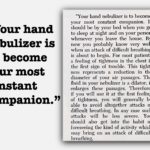
"Constant Companion"
In the article, Emphysema -Part III that appeared in the June 1960 issue of INHALATION THERAPY, the authors stated that a hand nebulizer should be a constant companion of those with emphysema.
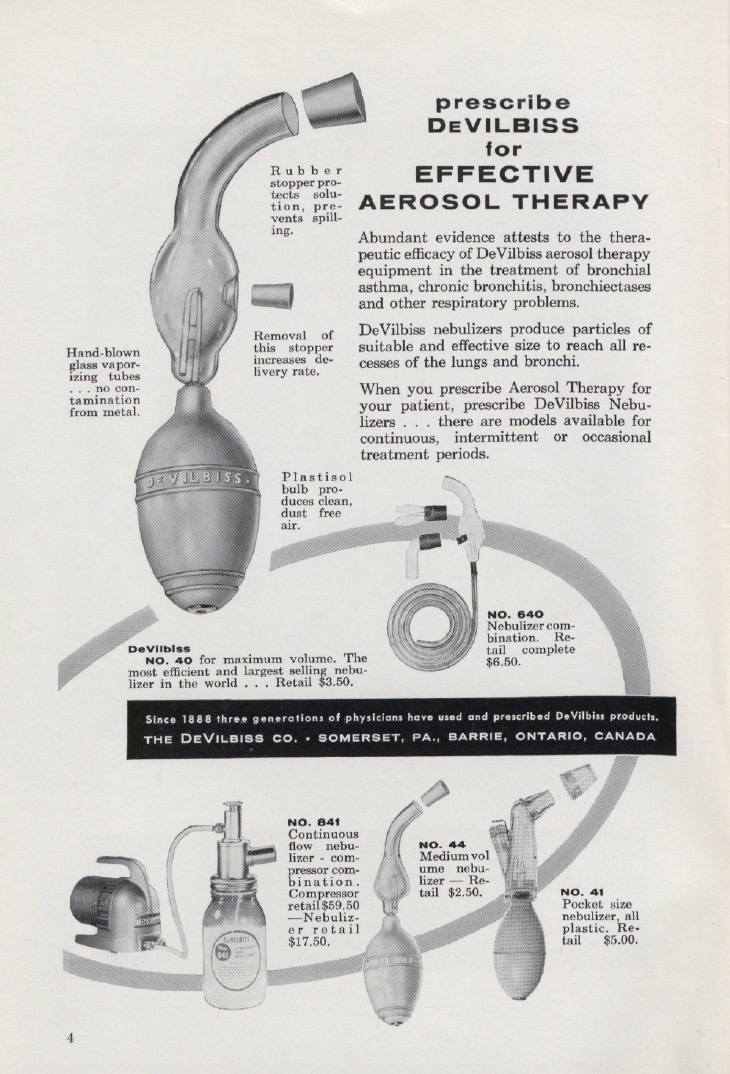
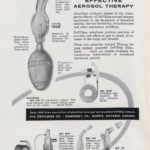
DeVilbiss Nebulizer
This ad for the DeVilbiss hand bulb nebulizer appeared in the February 1960 issue of INHALATION THERAPY.
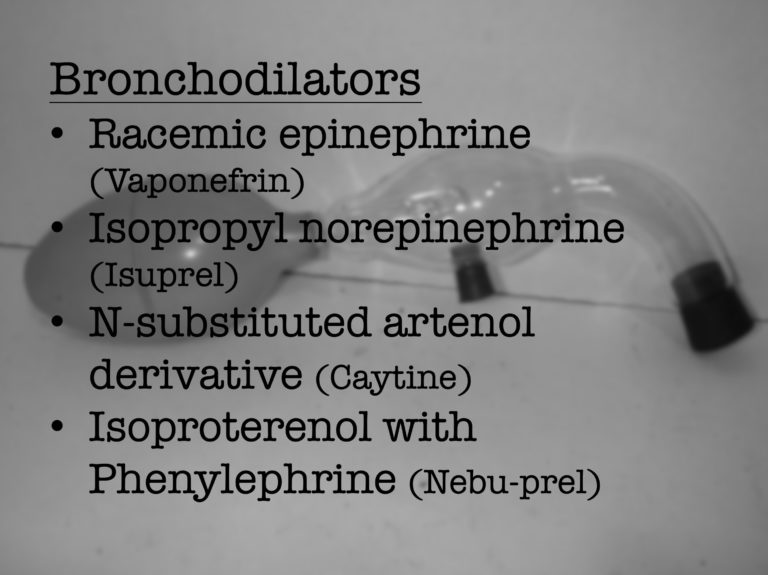
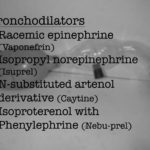
Bronchodilators
The series listed the most commonly nebulized bronchodilators in the treatment of emphysema through the late 1950s. They included Vaponefrin, Isuprel, Caytine, and Nebu-prel.
Image of Devilbiss 40 nebulizer from Dennis Glover
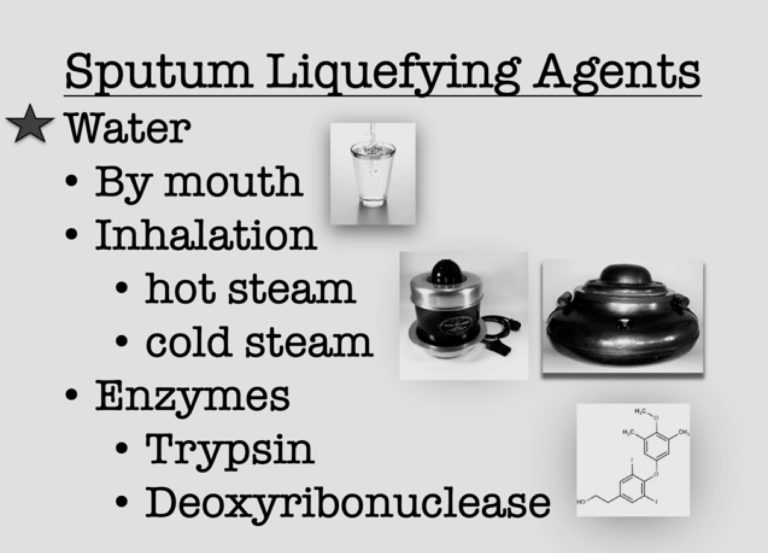
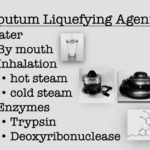
Sputum Liquifiers
In the three part series on emphysema in INHALATION THERAPY in 1960, water was identified as the primary sputum liquifying agent, whether by mouth, hot steam, or by a "cold steam". Trypsin and deoxyribonuclease were also listed as agents in this category. Oral Iodides were mentioned by cited as "somewhat disappointing in chronic obstructive emphysema."
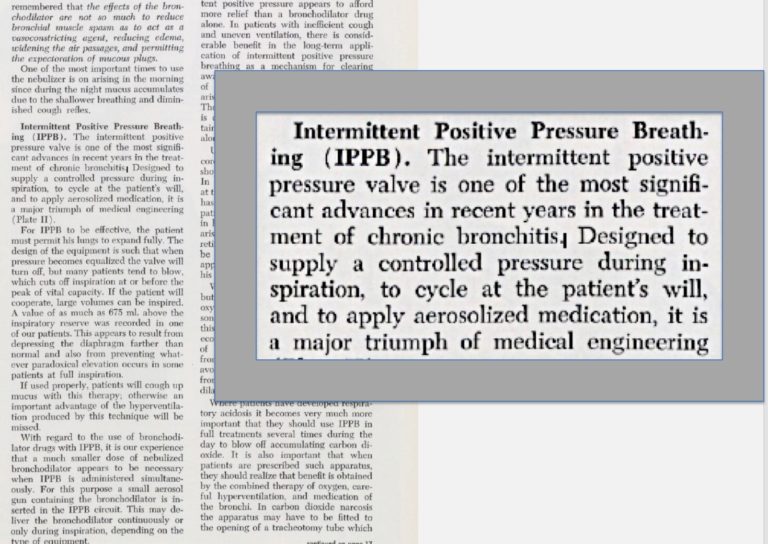
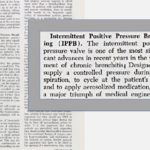
IPPB
The imtermittent positive pressure valve was described in the June 1960 article in INHALATION THERAPY as "one of the most significant advances in the treatment of chronic bronchitis" and as "a major triumph in medical engineering.
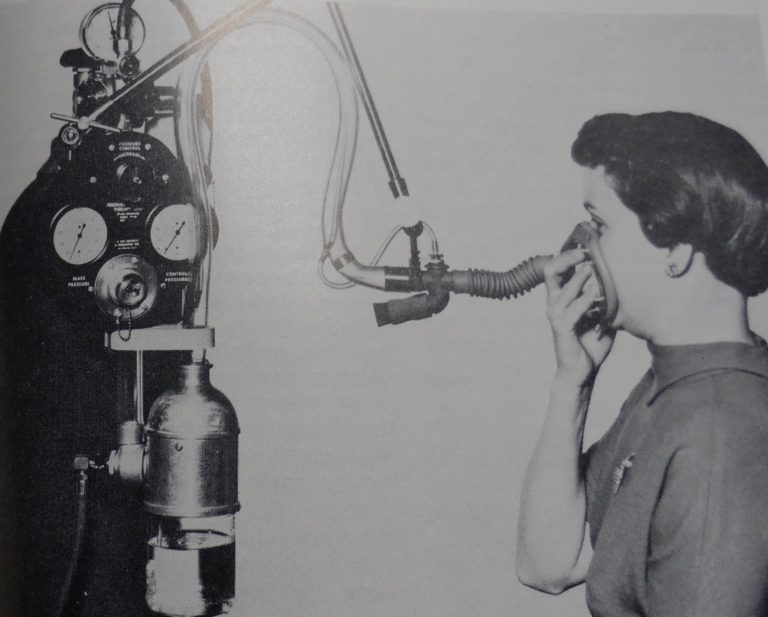
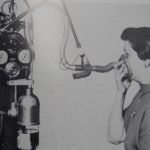
IPPB Therapy
The authors of the 1960 Emphysema series in INHALATION THERAPY recommended that patients should have an initial spirogram, then a 10-15 minute IPPB treatment, followed by a repeat spirogram to determine whether a patient would benefit from IPPB therapy. The authors stated that the majority of patients would demonstrate "an improved timed expiratory capacity and a marked improvement in exercise tolerance" following a 10-20 minute IPPB treatment. They also recommended IPPB therapy for those with respiratory infections.
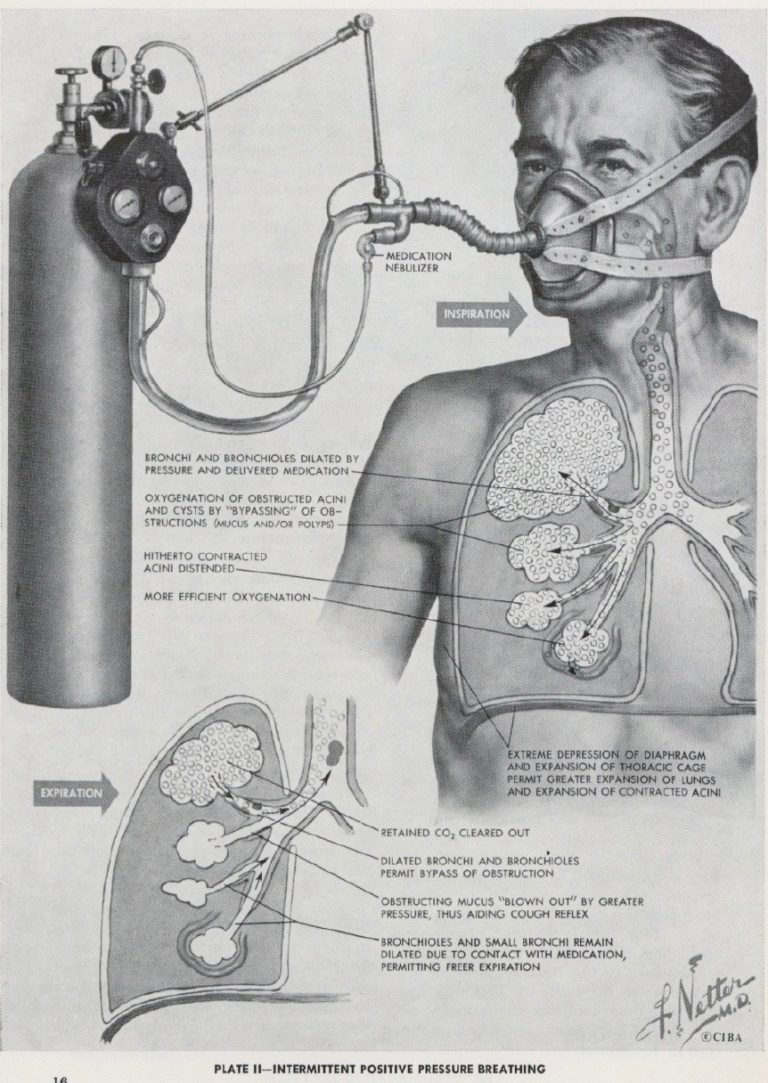
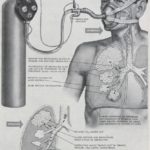
IPPB Therapy
This illustration from Frank Netter, MD appeared in the June 1960 issue of INHALATION THERAPY.
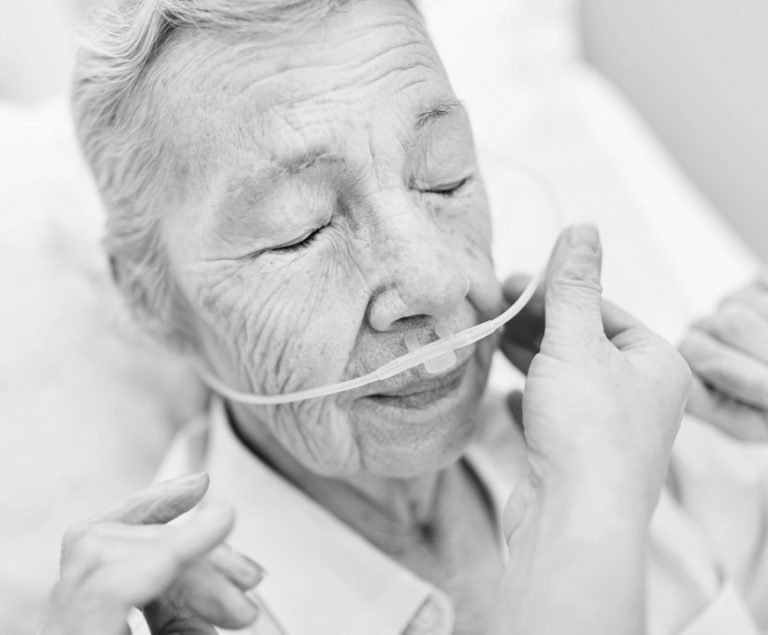

O2 Therapy
In Emphsema -III, the auhors of the June 1960 INHALATION THERAPY article recommended application of oxygen therapy "at a flow sufficient to give an oxygen concentration between 30%-40% ."
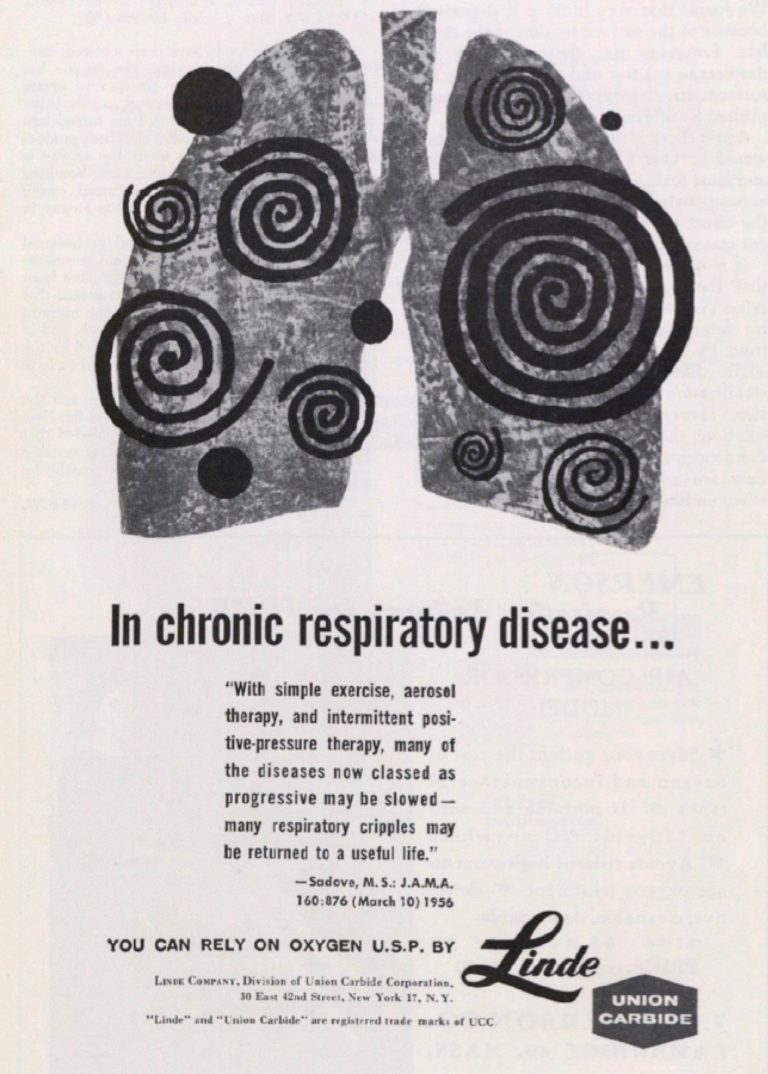
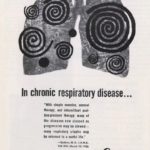
Linde Oxygen ad
This Linde ad from the April 1960 issue of INHALATION THERAPY focused on chronic respiratory disease management. It featured a quote from M.S. Sadova in the March 1956 article that appeared in JAMA: "With simple exercise, aerosol therapy, and intermittent positive pressure therapy, many of the diseases now classified as progressive may be slowed - - - many respiratory cripples may be returned to a useful life."


Breathing Exercises
The authors recommended breathing exercises and pursed lip breathing for those with emphysema in their June 1960 Emphysema -Part III article in INHALATION THERAPY,
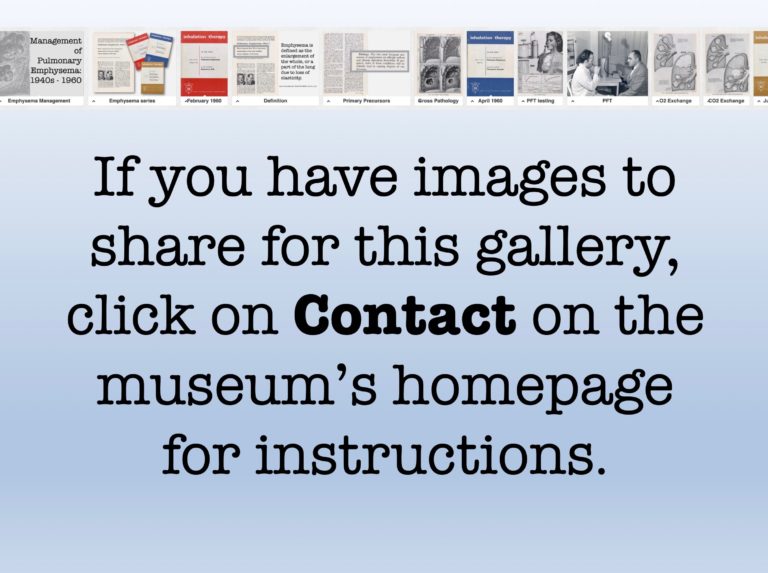

Images to Share?
Please follow the instructions to contribute photos for this gallery.